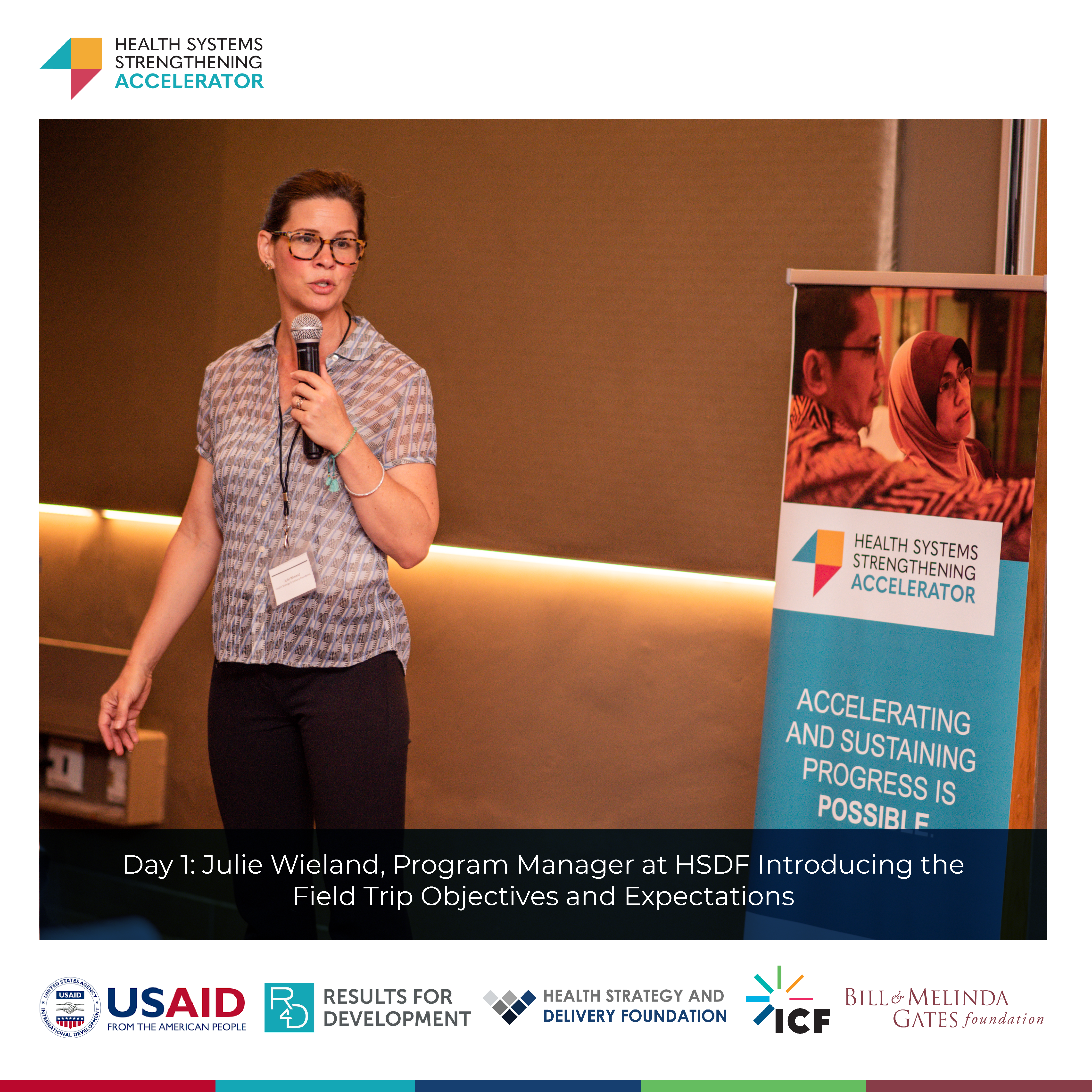Achieving Universal Health Coverage in Thailand: What Lessons Can Nigeria Learn?
Nigeria:
Over the last decade, we’ve had several health financing schemes, which include the National health insurance scheme (NHIS) and several community-based health insurance models in different states, all with very limited levels of success.
With the new wave of Universal health coverage (UCH), we are more geared up than ever to develop a sustainable national health financing strategy that would provide UCH for Nigerians.
Whilst we appreciate that our governance structure differs and our population is three times that of Thailand, we believe we can learn a thing or two from your experience.
Tell us about the journey to universal health coverage (UCH) in your country
Thailand:
The journey to UHC was neither easy nor straightforward. UHC in Thailand is a product of the convergence of political will, civil society mobilization, and technical know-how.
One of the first things we did was to build institutional capacity in research to back up upstream efforts and guide effective policy formulation. For example, the mapping of various health insurance schemes and their performance served as a strong foundation for policy analysis towards reform.
At the time of conception, Thailand was in an economic recession but there was strong political will towards achieving health equity. In 2002, after almost 3 decades, we finally achieved UCH for 60 million people in Thailand (90% of the population), through a tax-funded health insurance scheme. Prior to this, health insurance systems in Thailand were characterized by fragmentation, duplication, and inadequate coverage. You see, in the past, similar to Nigeria, there were 5 different schemes: Low-income scheme; Civil servants medical benefits scheme (CSMBS); Social security scheme (SSS); voluntary health care; and private health insurance, each with varying levels of coverage.
We had tried using different mechanisms to achieve better coverage, such as: the conservative approach which preserved status quo by incremental expansion of existing schemes towards more vulnerable groups; and the big bang approach which involved physical integration of all schemes into a single health insurance fund.
However, the game changer was when the Thai government adopted the Progressive approach which entailed strategic governmental reforms, integrating the benefit packages, provider payments and level of public budget subsidies, integration of all schemes into a single health insurance fund, while maintaining the institutional identities of the different schemes.
Nigeria:
We would like to hear more about this progressive approach, can you please break down the components involved and the critical success factors backing your choices
Thailand:
Ok, I’ll talk about the three components of the progressive approach we adopted:
revenue generation (strategic governmental reforms and legislation),
integrating the benefit packages, and
strategic purchasing and provider payments (purchasing provider split), while maintaining the institutional identities of the different schemes.
On revenue generation, we reviewed evidence from other countries that have achieved UCH which showed that it was not feasible to achieve UCH entirely though a contributory scheme; a sustainable and equitable form of revenue was crucial to this quest. Our health insurance scheme is primarily funded by general tax (for CSMBS & UC scheme) and payroll tax for SHI, both modelled after a progressive taxation system, in which the citizens pay in relation to how much they earn. However, there was still a problem of inclusion of the poor and/or those in the rural areas but during this period, we could not generate additional resources due to an economic crisis at the time. Therefore, to generate additional revenue and to ensure full coverage for those in the rural areas, based on evidence we instituted a strong pro-poor rural policy, which shifts the health budget disproportionately from urban areas to subsidize premiums for enrollees in the rural areas. Considering the similar contexts and fiscal constraints due to diminished crude oil prices, Nigeria could benefit from a reallocation within the health sector from hospital based spending to greater rural PHC spending.
To ensure equity, benefit packages were standardized across the three schemes. The benefit package for the UCS is comprehensive, covering services such as prevention care, health promotion in addition to curative services, accidents & emergencies. Initially, all beneficiaries accessed care at the contract unit of primary care, with a 30 Baht (0.7 USD) copay for an outpatient visit or admission. The company was instituted to discourage overutilization and to help contain cost and to ensure the benefit package was sustainable. However, this company was later abolished and a “free care regime” instituted. At inception, benefit packages were designed using historical coverage patterns in other schemes. Subsequently, inclusion or exclusion of services became guided by health technology assessments, cost effective analysis, budget impact assessments, supply side capacity to scale up and demand side factors related to population expectations.
Purchasing was strategic: capitation was set for outpatient services, prevention, and health promotion services and inpatient services were reimbursed through a global budget and DRG at the provincial level. The combination of the mixed reimbursement system prevented cost escalation, an issue currently being experienced by the Ghana National Health insurance scheme.
You know, evidence suggests that the purchaser-provider split is a way to ensure efficiency gains and good governance in healthcare. In Thailand, The National Health security board (NHSO), an autonomous body with its own governing board, served as purchasers and scheme governor. The ministry of public health (MOPH), other public and private facilities served as providers of health services, which was subject to the comprehensive geographical coverage of MOPH health infrastructure. Under the purchaser-provider split, a contract unit of primary care (CUP) was defined as the point of entry into the health system under the UCH scheme. This ensured rational use of care and promoted referral to higher levels of care. The typical CUP is a district health system (District hospital + 10-12 health centers) totals about 900 in the country (725 rural districts, 95 urban, and around 80 hospitals) each responsible for an average of 50,000 population.
Nigeria:
These are all impressive strides, how about challenges?
What were the main challenges and how have you been able to mitigate them?
Thailand:
There were a number of challenges but three, in particular, were striking.
The first was generating and building the citizen’s trust to enroll in the UCH scheme which had a copay of 30 Baht (about 0.7 USD per patient for all health services) given the harsh economic realities at the time, especially for the poor. To demonstrate our dedication towards UCH of all Thais, we provided subsidies for the vulnerable population and that increased our enrolment rates.
The second major challenge was the difficulty in harmonizing different data records of patients under each health care scheme, which affected the efficiency and effectiveness of hospital services. Differing standards of documentation and financing reimbursement among the three schemes led to misunderstandings in health benefits and delays in access to care. However, this was mitigated by implementing a regularly updated beneficiary enrolment system.
The third challenge was limited manpower to cater to the extensive geographical coverage of health services at the most peripheral level. We combated this by providing government subsidies for medical education as a way to ensure mandatory rural posting of new graduates, which guaranteed the availability of manpower at the district level. We believe this was a key enabler to the functioning of the UCH scheme.
This piece draws heavily from informal interviews from health care financing stakeholders in Nigeria and multiple published studies listed below.
Tangcharoensathien V, et al . Challenges of implementing universal health care in Thailand. In Kwon HJ (editor). Transforming the developmental welfare state in east Asia. UNRISD publication, 2005. Palgrave Macmillan
Achieving universal health coverage in Thailand: what lessons do we learn? Tangcharoensathien et al 2007, health systems knowledge network, Thailand.
Universal health coverage: case studies from Thailand. Health systems research institute, 2012.
O’Donnell o., van Doorslaer E., Rannan-Eliya R., et al. Who pays for healthcare in Asia? EQUIP project, working paper #1.2005
Melgaard B. from research to action- a bridge to be crossed. Editorial Bulletin of the World Health Organization. 2004, 82(10):723
Thailand’s Universal Coverage Scheme: Achievements and Challenges. An independent assessment of the first 10 years (2001-2010). — Nonthaburi, Thailand: Health Insurance System Research Office, 2012. 120 p.
Recent News
-
Empowering Nations: Safeguarding Blood, Inspiring Change
30 April 2024
Grants and Business Development Specialist
We are seeking a highly motivated and experienced Grants and Business Development Specialist to join our organization. The successful candidate will be responsible for identifying funding opportunities, developing grant proposals, and fostering partnerships with potential donors and stakeholders (regional and global). This role plays a vital part in securing funds and resources to support our organization’s mission and projects.
Apply NowPublic Health Consultant, Guinea
The consultant (working with the Accelerator team) will collect results from the tool, organize a meeting with stakeholders to discuss results from the tool, and produce a report on key findings and recommendations from the tool to be shared publicly.
Apply NowPublic Health Associate, Senegal
We are currently in search of an experienced Public Health professional in Senegal to work on the anticipated Nutrition Capacity Development and Financing Platform and provide technical assistance to elevate nutrition financing and strengthen local capacity to support these efforts. The Associate must be bilingual (English and French).
Apply Now


